The importance of the community in tackling social isolation and food insecurity
TOGETHER WE GROW: THE STORY OF COMMON UNITY
About Together We Grow
What do you get when you combine a community cafe, a community grocer and a community bike works? Plus a repair cafe, a sewing workshop, garden sharing, and a honey-making enterprise?
Common Unity! A truly wonderful example of the importance of the community in tackling issues like social isolation and food insecurity. And in building the social connections and social relationships so important to health and life.
In Together We Grow we get to know a group of community members doing the important work of caring for others and building community resilience. It’s a community hub of learning, support, creativity, joy, sharing and shared interest, all in one place.
Watch the trailer for Together We Grow
[ultimate_spacer height=”0″]Download subtitles
Together We Grow is currently available with English and Spanish subtitles. We hope to add more languages in the future. Click on the links below to download the .srt subtitle files.
Audio Description (AD) version
Together We Grow is now available with Audio Description (AD)! Click this link to buy the film and you’ll see an option for accessing the AD version.
More about the Together We Grow film and building community
What is community and why is it important?
This thriving hub is all about the importance of the community. The result? A community resilience model that’s bringing change to the social (and physical!) landscape in Lower Hutt, Aotearoa New Zealand.
As a catalyst for community activity and community care, Common Unity provides a response to the global issues we face. Issues like housing crises, food insecurity, and social isolation.
How to build a community
Common Unity founder Julia Milne is an inspirational mum of three and the driving force behind the project. From urban gardening in private backyards and a community garden to a local youth care facility and a local marae, it’s a great example of how to build community! It’s also a direct solution to food insecurity thanks to the thousands of meals prepared for children every week.
The Common Unity team has developed a model to better create community. And it’s one that could be put in place both across Aotearoa and in millions of communities around the world. They’ve proven that a strong community can be built, as well as demonstrating the importance of the community in improving people’s lives. This film was made to help them share their story.
What people are saying about Together We Grow
I loved this. What an incredible initiative, what a beautiful, creative community. I really admire everything they do. Thank you so much for bringing it to us in this beautifully made video too. Wow. Love it.
– countrymousesfarmhouse497, YouTube
Help us make more films like this
Donate to Happen Films
Supporting our work is easy through Patreon. Join our community of monthly contributors and get access to exclusive content, live full length interviews and behind-the-scenes footage.
Host a screening
Keen to share an inspirational film with your community? Together We Grow is now available for hosted public screenings, both for in-person and online events. Click this link to see Together We Grow screening options.
For more information on how to share a film with your community, check out our Host a Screening page.
People featured in this film about community building
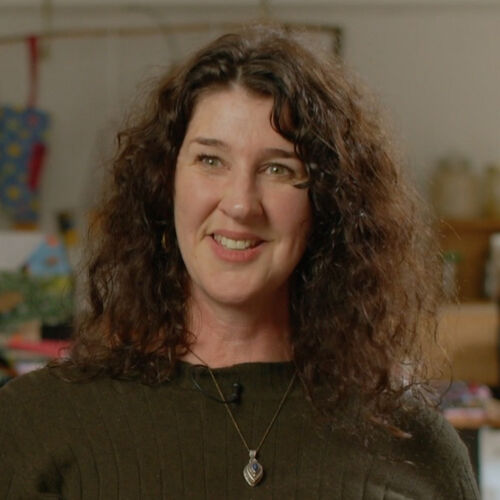
Julia Milne, Common Unity founder
Julia began teaching children to grow food at Epuni School, Lower Hutt. Common Unity is now a thriving hub that includes a community cafe, a community bike works, urban gardening, and highlights the importance of the community.
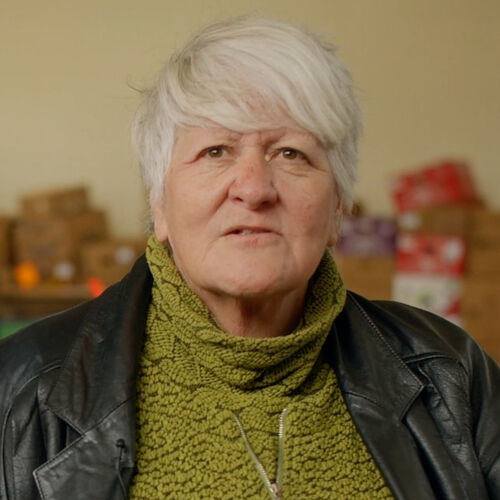
Teresea Olsen, Kokiri Marae general manager
Teresea is a key player within the Common Unity community resilience model, which includes a pataka kai (community food bank) that helps feed the community, no questions asked.
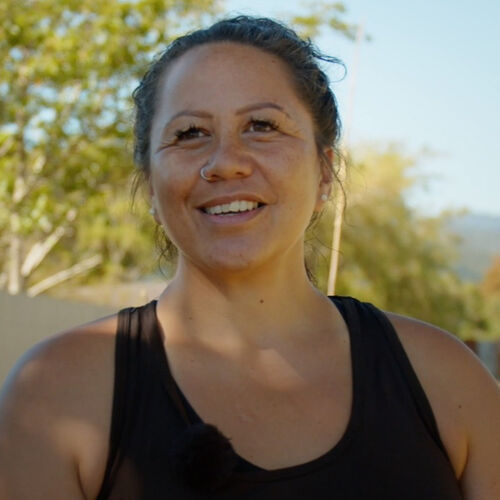
Moana Williams, Te Māra ō ngā Kaimanu head gardener
Passionate about gardening and community building, Moana is a great example of community urban gardening that’s reducing food insecurity by feeding the local community in Wainuiomata.
Read the full transcript for Together We Grow
– [Julia] There’s still an awful lot of families that fall between the gaps, or don’t know how to find the services, or if they do find the services, find that they don’t fit the criteria. The unexamined assumption that if you are hungry, it’s your own fault, you can’t manage, or you’ve got drug addictions, or whatever it is, that narrative that a community that’s not even directly involved with that family will hold that also absolves you of having any kind of participation or response to those that need. If I believe that you don’t deserve, I don’t need to take any kind of action to share with you. I’m quite interested in a world where we all believe in better stories of one another. We know from the stories that come through the door of The ReMakery, that things are really, really hard in our communities, but who wants to sit and talk about how hard it all is all the time, when we can maybe be creating some joy and magic, laughing at each other or growing some food together? It just feels like talking about things in a different way. Common Unity’s approach to giving to the community is all about being alongside, and having those conversations with community that they are part of what we create here. We didn’t want to parachute any services or anything in from other places, that this is just simply something that we create for ourselves, with one another, responding to what it is that we see for ourselves in this community.
– [Volunteer] Oh, it’s lovely!
– [Volunteer 2] Would you like one?
– [Volunteer 3] Oh no, I think that’s great. You won’t lose your kid with that.
– [Volunteer] No!
– [Julia] We have a community kitchen. We have a little food co-op and grocer, and really importantly, we have the cafe. We have sewing and knitting.
– [Volunteer] Two done.
– [Julia] We run our own honey enterprise here, recycled bikes, art, lots of art. Our really big focus is our food hub, and our food hub is made up of Urban Kai, which means that we run 12 to 14 urban farms across the valley and into our prison. I think the things that we are addressing here in this community are around quality of food and the sustainable creation of food. What we have learned is that often that when people are on really low incomes, their food choices are not wide at all, and we wanted the opportunity to flip that. Our food production and how we grow food is a pretty simple model, really. We put farms into either the backyards of people that have partnered with us, or into facilities that are needing as much help with wellbeing as possible, for example, our local prison. We run a big project up there, and also at the residential care facility that houses teenagers that can’t be living in their homes right now. Social housing tenants can also apply to have support to put in a farm in their backyard, and we do that really deliberately, because we want to grow the strengths from the hardest places.
– [Eden] This is mine and my daughter’s home. Here’s another one for you.
– [Daughter] Yay.
– [Eden] Today we’ve got volunteers from The ReMakery, the Saturday morning garden crew who are coming to do some work, and help me keep this place maintainable. I usually just take what I need for the day or for the meal. Everything else is seeded, and taken back to The ReMakery for seedlings, plant sales, that sort of thing. They often come and do a small harvest of whatever’s ready to go for the kitchen that’s at The ReMakery. What about these ones? Oh, these ones are big. I was working full time for a couple of years, and I got into the habit of being too tired to make dinner, and it was take-aways, and I felt unwell in myself, and I know that it would be affecting my daughter as well. When this came into our lives, starting off with tomatoes and lettuce, it’s simple to make a salad, and that really enticed Clara into, “Oh, maybe I wanna try everything else that’s in the garden.” Better opening them than I am. The first time I gave her a broad beans straight out of the pod was maybe like, a month ago, and she just, “Can I have some more? Oh, it smells so good,” like she wants to rip them open. “Can we save some for dinner, please?” The impact that it’s had on us financially has been really incredible. Last year, I saved $230 on my grocery bill, just from not having to buy vegetables, and for some families, that’s like what they’re looking to save on their power bill.
– [Farmer] Eden, would you like this?
– [Eden] Yeah, actually…! Something like this is really important, to teach children that produce doesn’t just come from the supermarket. She has learnt a lot, and I take pride in that as a mother.
– [Farmer] It’s a little one.
– [Farmer 2] Stunning!
– [Eden] I have met so many wonderful people through this project. I wouldn’t have gotten through a lot of this without some help, and that’s what community’s all about.
– [Hannah] We’re just heading around the corner from The ReMakery to Riverside Farm. It’s within walking distance, but I’ve just got a lot of stuff to deliver today.
– [Julia] We have a farm manager, Hannah, and she takes groups of people to various sites throughout the week, and they grow food.
– [Hannah] Oh look, this one’s already got fruit.
– [Julia] Wherever we grow that food, Hannah delivers an educational program alongside that, and whatever food is surplus after the families have taken what they need comes back to our kitchen.
– [Hannah] This garden is a partnership with Oranga Tamariki. We’re using their land and facility. This is the closest garden to our kitchen. If the chef says, “Oh, I need some salad,” we can pop down here and get it. Everything you see is recycled or donated. We use cardboard, we use wool, we use basically whatever we can find. The volunteers are amazing. We couldn’t do what we do without the volunteers. There’s really no such thing as the typical volunteer. You get people that want to learn to garden. You get some people that are doing community service, we get people that have been gardening all their life, and just want to garden with other people, or share their knowledge. You want them to be the same size.
– [Volunteer] That’s the […] plant. ‘Cause that’s what they look like, too…
– [Hannah] Although it’s a voluntary thing, people come because they enjoy it, and because they get a lot of benefits. This is Bruce’s house. Bruce’s neighbor Gordon came to us. He knew that Bruce had this awesome backyard, but also that Bruce needed a bit of support. He’s a elderly gentleman, he has mobility issues, he’s very limited in what he can do, and a garden this size, it’s a liability. You basically have to pay for someone to mow it. This is what the garden used to look like. It was waist-high weeds, dock. One of our beautiful volunteers weed-whacked the grass, so we just strimmed it, put down the cardboard, put down the wood chip, put the potatoes and the pumpkins in. This garden has only been in for five weeks. Speaks for itself. This is what you can do in a backyard with a few people, a bit of know-how, and some community spirit.
– [Julia] How’s everything looking?
– [Prison officer] Not too bad, just coming out of that winter mode, really ah? Not a lot happening. Ground’s still cold.
– [Julia] My parents were just the most extraordinarily hardworking, beautiful people. My father worked at a prison that was a farm, and spent most of his days out with the men, and they would grow food for the community.
– [Prisoner] It’s taken me a long time to get something to grow in there.
– [CUPA volunteer] Look’s lovely.
– [Julia] Because his literacy was not great, he couldn’t write his own reports.
– [Prisoner] These are all ready.
– [CUPA volunteer] Look at your lettuces, yum!
– [Prisoner] These need to be picked before they get eaten.
– My upbringing was spent, in my early years, listening to him narrate the things that had happened during the day, to my mother.
– [Prisoner] This usually is covered in watercress.
– How amazing that you’re able, this is so amazing.
– [Prisoner] All this is ready to go now.
– My bedroom was beside the living room, and I grew up listening to extraordinary stories, stories of why the men were incarcerated, stories of their families.
– [CUPA Volunteer] Look at these.
– Yeah. See, and the cabbages are looking good too.
– [Julia] By the time that I got to high school, I felt quite radical in my ideas about why it was that some people struggled, and some people didn’t, and for me, that great sense of injustice was born at that time, and has never really abated.
– [Julia] Have you ever grown vegetables before?
– [Prisoner] Yeah, I do grow at home. This is my first time growing cauli.
– That’s amazing, and look, oh wow. That must feel so good.
– Kia ora, I haven’t done a garden for a long time.
– Yeah.
– Got a bit lazy on it at home, but when I get out I’ll be doing it again.
– Good. It’s kind of addictive right?
– It is, it’s very enjoyable.
– Yes.
– [Prisoner] Soothes the mind. You’re free when you’re out here.
– There was a part of my upbringing that just felt so deeply frugal, and there was never anything new, and everything was homemade, and there was always a sense of seasonality in our world. We only ever ate what it was that we grew, or fruit that we picked from our own fruit trees. When I eventually got married, and had more children, all of those things were really important to me, so I studied horticulture and permaculture, and I had a background in natural medicine, and there was kind of this really beautiful convergence point with all of that coming together. But I don’t think any of it was really realized until I became a single parent, and was all of a sudden on my own, and had my children living on a benefit, and tasked with being the best parent that I possibly could on the lowest income that you can imagine, and wanting them to have the experiences that I had had. Of course, that meant all of that food production, but even more than that, it meant that I needed to connect to community, and really learnt strongly through that time that actually we’re not meant to live as single human units. We are meant to be creatures of community. During that time, I also had a really significant cancer journey, and to be faced with this incredibly scary thing, to want to live so badly because you’ve got three beautiful children that need you so much. While I was sick, me and my children arrived at this beautiful, tumble-down cottage that we moved into, and this is where my cancer journey really took place. I just had such a commitment to rebuilding our lives, and getting better. We lived kind of tucked away in this gorgeous little forest, and right beside us was another little cottage, and in that cottage was this amazing woman whose name was Bunny, and Bunny was the principal of this little school. She would come over, and sit with me in front of the fire at night when I was really sick, and she would tell me stories of the children that she cared for at that school, and encourage me to be well, because she wanted me to go and grow a garden with them. So I did that. And that’s how the Epuni School garden kicked off, a big old soccer field, a sense of newness from being sick, a sense of connection with this amazing woman who was just championing me, and telling me that I could do it, just to get on with it.
– [Julia] Look how big the trees are now.
– Whoa, it’s grown so much.
– I know, look at that enormous olive tree now. Remember that this was the very center point of the site, and that’s the very first point that we grew from?
– Yeah, you measured it out with a string and rope.
– We did measure it out with a string and rope! We didn’t have any money, but we had lots of heart, and we had a really strong relationship with the school, but more importantly, we had this extraordinary buy-in from all of the children that grew really excited about the idea of being farmers. It’s so foresty now. That’s a kiwi fruit.
– Is that a kiwi fruit?
– Yeah. I think we had about $25 when we started. We wanted to build our garden in such a way that anyone could look at it and immediately think, “I can do that at home, because it hasn’t cost any money.” It was a very tight community of parents, and I didn’t live in the immediate vicinity, so there was mistrust for sure, and not everyone wanted to come and help in the garden. I had had the misconception that actually, this is such a fun project, everyone will want to come, so I had to learn why it was that people maybe didn’t. I also had to think of some ideas to really engage the community.
– Shall we go plant some swamp plants for the butterflies?
– Yeah!
– Cheers.
– Okay, follow me, and I’ll show you where we’re putting them.
– When I finally did get some momentum going with the parent body, I learnt that the reason why they didn’t want to come and dig up that field with me is that life was really hard, and I made it look even harder by sweating, and lugging, and wheelbarrowing, and that they just actually needed a soft place to be.
– Put it in between our fingers and tip it gently.
– [Julia] That’s when we acquired the use of an old classroom onsite, and began to work in a different way.
– There we go.
– Beautiful, real good.
– We were running cooking classes, sewing classes, knitting. By this stage, there was beekeeping classes going on in there, and particularly around our honey and sewing, some of our enterprises were starting to become quite commercial, and we were able to look at employment opportunities, and we realized that actually we had outgrown our space, and we needed a place to be. Just over the road, there was a old, disused plaster factory, and we didn’t have any money, but we made the approach to the land owner and asked them if they would partner with us for a year, and give us the building for no money, and become a stakeholder in our project, and they said yes.
– Every person can be creative. And I really, really enjoy guiding through the process of creation. All the products that we make, we sell it online, or downstairs, you can see it in the shop. The community donate. We work by donation. They’re donating machines, materials. We receive fabrics – 100% cotton, banners from old advertisement, and leather, buttons, thread. We have textiles to create new things for the next five years nonstop. We try to design new products every week, and we also work with specific needs for the community. I received an email from a nurse, she has this idea to go to the schools, and teach the kids how to brush their teeth. So I designed a prototype for her out of banners that you can put toothpaste and toothbrush, waterproof, and can have our label, and you can put the name of the kid. The idea is to keep going designing products with repurposed materials. Materials that otherwise would end up in the landfill. We welcome volunteers, because we think that it’s important that you donate your time, you learn a skill that you will use all your life, and at the same time, we are a social enterprise, so all the profit that we make end up in the kitchen to produce more food for more kids that are in need.
– My eldest son, Joseph, is a really keen mountaineer, and he runs the camping library at The ReMakery. My daughter Belle has spent hours and hours and hours, right from her earliest years, doing this kind of stuff with me. My son Izaak works in the kitchen, and he gets to work alongside a lot of the mamas from the village, and that’s the best place for a young lad, I think, and I love how they are helping shape him.
– The majority of the food that we get here is grown locally, or sourced locally. Everything is either a donation from someone, or it’s grown by someone in the community. From there, it’s our job to take that and harness it, and put it into the places that count. We’ve got five different schools that we’re donating lunches to, Kokiri Marae, and then the cafe, and a few other places. I manage the kitchen here at Common Unity. I was living up in Auckland and working as a chef up there. Going into lockdown, I lost my job, and had to move back down with family. I come from the wonderful world of fine dining, or the not so wonderful world of fine dining. Fridays and Saturdays you could only do seven courses, which winds up being sixteen things that you try, and if you get a wine pairing with that, for one person, that’s $345. Obscene amounts of money. Food that I would never really get to experience myself, and yet I’m cooking it for other people. The whole essence of that just feels fake, and it doesn’t feel real. Something that we’ve really tried to do here is make everything accessible for everyone so that anyone can come into the cafe and have a nice meal, and it doesn’t have to be expensive. During winter, we’re selling soup by the bowl for $3. This is the kind of food that I would cook if I was inviting someone into my house, whereas up there, it’s the kind of food that I cook to inflate my own ego. I don’t think I’m ever going to go back to fine dining ever again.
– I just love coming here. I’m donating my time, but I’m also gaining heaps by just meeting people here, and the lovely, friendly chatter that goes on. A wee while ago, I was really sort of quite down, and felt that life really wasn’t all that worthwhile, and coming in here, and mixing with all these people, and just seeing all the good things that they do, and also being able to contribute, it’s very healing. To be able to help someone and see them come out of their struggles.
– This is a question that we should be deeply understanding of, because essentially this is the essence of Urban Kai, creating impact around food resilience in our community. We’re not a food bank. The traditional food bank model looks like people applying to have support for emergency food. They often fill out forms, and mostly are given boxes of food that they don’t get to choose for themselves, and what we hear from our community who have been recipients of food parcels is that does not much to increase their mana, or their sense of themselves. So we developed another system of being able to give away meals. We think that as an organization, it is far more impactful to be taking on the responsibility of feeding ourselves, and the government’s job in that is to come alongside, to support and enable us to do what it is that we know is the best thing for our community, rather than to have a service or a truck deliver something to us that has done nothing to enable the action of collectivism from that community.
– Hi, Mum.
– Hi, guys. How was your day?
– Good.
– That’s good.
– The trick is just to go as deep as you can in the holes that you make. COVID was an extraordinary time for us. In he goes. Beautiful. We heard that most of the food banks were closing. The phone began to ring, and we realized that actually there was something really significant happening in our community as people were not able to feed themselves. So we got an exemption to open our kitchen, and we took on firstly, the database of our local food bank, and began to cook and deliver the meals ourselves, and realized that the need far outstripped what we were able to do. Do you know how many meals your mum has cooked this year?
– [Child] No.
– Your mama, this year, has cooked 37,000 meals.
– [Child] My dad’s older than that.
– Your dad’s older than that? We realized, too, that Kokiri Marae was in exactly the same place as us. They had all of the distribution, and they were connected to all of the families in need, so by us opening our kitchen, and collaborating with them, we were able to just start pushing out 2000 meals a week together.
– Two spaghetti, two baked beans. I’m gonna put that in there. Going to grab a Weet-Bix.
– Did you start with the people who are normally part of-
– Yes, yes, and they put out the word that, you know, Kokiri was providing all this food, and they just come.
– …all the additional families that you found through that period of time, it made me realize that actually, probably some of the data that we have as a city is quite askew.
– Taking the food to the families, we really began to see them, because families, usually, in need, will tell you what you need to know. But when we dropped food off at their houses, we saw 22 people living in a two-bedroom house. We saw people coming out of the garage. We saw three generations of families in little houses, ’cause they had nothing to hide, ’cause we were taking food. That’s all we were doing for them. We weren’t asking them questions. We weren’t asking them why are you big families living in a small house, you know? So there was no barriers. You know, I’ve worked in the community for over 35 years, and I thought that I knew our community. During the COVID, I began to realize I didn’t know them at all.
– If a whānau is coming for food where there’s lots of family violence in the home, then that’s the priority, right? About trying to get through each day, and keeping themselves safe. They can’t think any further than that. They can’t think of, “I need to be thinking about growing my own kai,” or that kind of stuff because, you know, that’s their world. “How do I get through this day, safely”, you know? “How do I keep my children safe?” That’s the focus.
– There is healing that needs to take place before people feel that they are activated into moving from crisis, into feeling powerful and enabled. Yeah, and I don’t think we understand that enough. Those that don’t suffer in that way do not understand or have enough compassion in that space.
– So have you done all the referrals for today, Kelly?
– I’ve done all the referrals for today, though we’ve got seven that have already come through from Facebook, and then we’ve got all the requests coming through via email for tomorrow’s deliveries.
– Plus the ones that’ll come over the 0800 number, right?
– [Kelly] Yes.
– The majority of our pātaka is run by volunteers. The good thing about this is that it’s a very easy kaupapa to get involved in, you know? People are drawn to the fact that they wanna help people who are hungry. We’ve got a 24-hour phone line that is manned by one person. She’s always at the end of the phone, and through our Facebook as well. They just only have to give us their details around, you know, their name, their address, their phone number. That’s all they need to tell us, numbers in their house and that’s it. We don’t need to know anything else about them. It’s enough that they’re hungry.
– This is our mara. We named it Te Mara O Ngā Kai Manu, which is an extension of our pātaka kai here in Wainuiomata. I grow all the kai here in the mara, and it goes all into our pātaka kai, into the food boxes that go to our community to families in need. I’m growing on less than an acre of land here at the back of St. Peter’s Church. I also have an orchard out in the front, so I grow trees.
– [Person in group] How many spuds have you got? I’m observing a lot of benefits from the community. They come in, not just hands-on to help, but they also donate a lot of our resources that we need. It gives people in the community a space to come into and contribute. Honestly, when you see them work, you can tell that they have a purpose. Long-term goal is our wellbeing. What I’d like to see in the future vision is everybody being well, mentally, physically, spiritually. We’re more than just a mara, yeah.
– A thriving community is when a community can look after itself. It doesn’t have to always rely on the supermarkets to provide them with food. That’s what a thriving community is, and also a community that works together for the same common goal.
– I spend a lot of time observing the mental health of our community, the staff, volunteers, and people that come through our building with the stories that they bring, and all of the challenges in that mental health and wellbeing space, and that’s got to be symptomatic of a lack of connection to not only ourselves, but also each other, but also to the natural world.
– There’s real reward in taking something that was abandoned, and had it, making it useful again, and then someone’s going to get enjoyment out of it. We take donated bikes, and we repair and refurbish them, give them a bit of a tune-up, and a safety check, and that sort of stuff, and then we sell them on for parts, or we give them to people in the community who are in need of some transportation. Sometimes we send them to refugee groups, and we donated a bunch to schools recently. Just kind of give them a new lease on life. Keep them out of the tip.
– Yep, that one can go… spare wheel for somewhere else.
– Got a couple of good volunteers that come in regularly, and they do great work, and that helps us keep up, ’cause we get swamped.
– I enjoy coming here. It keeps me occupied. When Jago said to me, “Oh, hey, Paul, we’re gonna take 10 of these smaller bikes to Rātā Street School and give them to the kids to ride, man, that was just so awesome to see, you know? Brought tears to my eyes seeing kids actually get to ride a bike that’s come from here.
– Yeah, well just wind it up tight…
– Jago’s always made me welcome here. So does everyone else that’s at this place. I’m proud to be a part of this.
– We sell bikes for as cheap as $25, and the ones that we sell for more help to fund those ones in a sense, you know, like going for parts, and labor, and all that sort of stuff. It is really rewarding that people get to get a cheap bike, and get from A to B. I felt like I was a real taker, like I was just doing a lot of taking in life. I started looking around thinking about, “Well, how can I give back in life?” And I started volunteering here on the bikes on Wednesday nights, got to know the crew, really enjoyed it, got sort of entrapped here in the goodness. I actually got medically retired from what was a very stressful role and ended up coming here, and being employed, so it’s sort of a bit of a safety-net, land-on-my-feet scenario. I was actually getting really ill at my last job, and they were really supportive, but the requirements of the role, and the demands of the role, couldn’t be altered. There wasn’t the flexibility in that space to do other things. I was a specialist in particular subjects, and I was just needed in those areas. Deadlines were tight, quite a bit of pressure to get a good end result, and you know, be timely about it as well. And when you’re mentally not well, those sorts of things are a real struggle to achieve, and I was there for 15 years, so at points, it was really good, but towards the end there, not so great. It was really refreshing coming here. It’s been a huge, huge change for me. It wasn’t just support at work doing the ReCycled Rides. I mean, they extended it to where I’m in this space now, being able to paint, being able to hang paintings upstairs and stuff, and exhibit, do murals, all sorts of really cool stuff that just would never have been on the radar. It’s pretty incredible. Wouldn’t have happened without the actual breaking down, I think. The staff here all have an understanding, and an empathy for the things you’re going through, and look out for you. You feel more valued. You feel that your work is valuable, and you feel like an individual and a person rather than the number, I guess.
– Thanks! I find that being a part of a community isn’t just about meeting people. It’s about getting to know them, and sharing your passion, and them sharing their passion, and everybody growing together. It makes life a lot more fun, and it definitely makes the bonds in the community a lot stronger.
– I think the space is good for mental wellbeing as well. I’ve had all walks of life come through here, and I’m really grateful to cross paths with them through this mara. But at the same time, to seeing how they leave, really leaves a mark in my heart. It has a ripple effect that will continue to their kids, and their kids’ kids, and so on.
– Imagine, you get a whole street full of skilled people that come together and share their skills. My gosh, what a difference that we would make, ah? We’ll have more community come, we’ll have them sharing their skills with us, and our skills with them, just like we do with Common Unity. There’s another way of doing things, and when we have communities that can do that, what a difference we will make, eh? What a difference we will make.
– Our jobs would be done here if we didn’t need to get up in the morning and necessarily go to work, because the community was simply doing the growing, and the feeding for themselves. How we know if we are truly successful is simply to dismantle this facility, and embed everything entirely in the community itself. And I think it’s such a beautiful mission to wake up, and come to work every morning and think, “How can I do something in a way today that enables me not to have to do it tomorrow because someone else is doing it for themselves?”
Links to more about Common Unity, their online “Grow Kit” and how you can support their work
Links to information about Common Unity and it’s community hub partners
- Common Unity website that showcases how it’s building the community in Lower Hutt
- Instagram feed showcasing Common Unity’s community development project
- Follow Common Unity’s work to create community on Facebook
- Website for Kokiri Marae, which runs a pataka kai (community food bank)
- Facebook page for the Te Māra ō ngā Kaimanu community urban garden
Links to more about Common Unity and building community resilience
- ‘Common Unity: a flourishing community hub’ – RNZ interview with Julia Milne, 2022
- ‘Young Māori leading by example for what co-governance could look like’ – Stuff article, 2023
- ‘Down to earth: Common Unity Project founder Julia Milne’s love of The Remakery’ – Stuff article, 20
Access the Common Unity Grow Kit
What does Common Unity do when food insecurity is turning into a social crisis? They open source everything!
After 12 months of development and input from their community, Common Unity has launched a community “Grow Kit” course that’s free to view. Click here to access the Grow Kit link on the Common Unity website.
Support Common Unity in their community building
There are a bunch of ways we can each help Common Unity continue their work to create community. From gifts in kind like seeds, garden tools, fabrics, and more, to programmes like “Fund Our Whānau” and “Fund a Farmer” where donations help them to educate their community to grow food.
Click this link to check out the options on the Common Unity Support page.
More about Julia Milne, founder of Common Unity
Julia Milne is a visionary social entrepreneur and advocate for mental health. She’s also the founder of Common Unity. Growing up in a close-knit community, Julia’s early experiences shaped her future life. They deeply instilled the importance of the community and of support within neighbourhoods. Her journey began as a grassroots activist, focusing on healthcare, education, and mental health.
A leader in community building
Julia’s influence transcends the organisations she’s worked for. She’s been a driving force for policy reform and collaboration, working with government agencies, healthcare providers, and community leaders. Her work to promote better mental health services has led to tangible changes over the years.
Julia is also a sought-after speaker and educator. She has shared her insights on mental health, community development, and social entrepreneurship globally. Her ability to inspire others and mobilise support has been key to the reach and impact of Common Unity.
Julia’s remarkable journey demonstrates the transformative power of individuals who envision a better world. And she’s worked hard to make that vision a reality. Her legacy of unity, compassion, and empowerment has left an enduring mark. Countless individuals have benefited from Julia’s dedication to healthier, more connected communities.
Understanding the needs of the community
Julia understands the importance of the community. And the essential role of community hubs in creating spaces where community members can come together and create a sense of belonging. She is a firm believer in a resiliency model for community, using this to bring about positive change in the lives of the people she serves.
In her life’s work, Julia has demonstrated that community building goes beyond words. It’s a guiding principle, a way of life, and a commitment to making our communities stronger, healthier, and more connected. Julia is a true advocate for community building and a role model for those who seek to make a difference through the power of social connections.
Whether you encounter the legacy of Julia’s work in Common Unity’s community cafe, garden sharing, community bike works or any other aspect of its community development, her message is clear. Communities are important, and together we can create a community that thrives and supports one another.
Other films you might like
Degrowth in the Suburbs
Growing food, using biogas and solar power, and taking part in community initiatives to live a simple, thriving, and sustainable life.
Creatures of Place
Living on an urban 1/4-acre block using permaculture principals to grow most of the family’s food, minimise energy use, and forage for materials.
Urban Abundance
Growing food for purchase and helping others grow food in their backyards is how this couple are building community resilience and food security.
Quicklinks for this page
- More about the the Together We Grow film and community building
- What people are saying about Together We Grow
- Help us make more films like this
- People featured in this film about community building
- Read the full transcript for Together We Grow
- Links to more about Common Unity, their online “Grow Kit” and how you can support their work
- More about Julia Milne, founder of Common Unity
- Other Happen Films documentaries you might enjoy
- Share your thoughts about community building and the Together We Grow film
Why make this film about building community resilience?
“We first heard about Common Unity in 2018, when someone told us about Sew Good. It’s a sewing collective offering community lessons using machines and materials that had been gifted to the community hub. They were working with men at the nearby prison to make upcycled goods to help fund meals for families in need. Sounded like something we should know more about!
“We learned that this thriving hub also helps to establish urban gardens in the back yards of NZ Housing tenants, in a local youth care facility, at the prison, and in a nearby school. And that they were feeding 2000 families each week from those gardens. What’s more, they had a recycled bikes workshop, a solar-powered commercial kitchen, a food co-op, and a bustling low-priced organic community cafe. We knew we had to visit.
“We’ve made Together We Grow because we hope Julia’s story – and the story of this beautiful community – will motivate others to get involved to create community resilience. Whether that’s in one of the many ways described in this film, or in their own unique way. As with all our films, our aim is to inspire joyful action in response to the many challenges humanity is facing.”
– Jordan Osmond and Antoinette Wilson,
Happen Films
Together We Grow press kit
If you’re from a media organisation or just looking for more info about Together We Grow, you can download our electronic press kit (EPK) by clicking the button below.
For media wishing to arrange an interview with the team at Common Unity, please email them; or with the film directors, please Contact Us.
What is community funded filmmaking?
We release the majority of our films online for free so we can reach as many people as possible. But this is only achievable thanks to the supporting donations we receive: from individual viewers, aligned organisations, and like-minded philanthropists. Without that funding, we can’t make the films we know need to be made.
If you’d like to support us, know that no amount is too small – every dollar becomes part of a fund that helps us make our next solutions-focused film.
To learn more about our approach to Community Supported Filmmaking, read the long-form blog post we wrote. Or visit the About page to learn more about us, about our ethics, and about how funds are used.
Sign-up to the Happen Films newsletter
Sign up to our newsletter to be notified about new film releases, behind-the-scenes news, and updates about all things Happen Films! (Note: We only send a newsletter out every 4–6 weeks.)


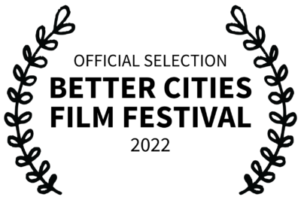
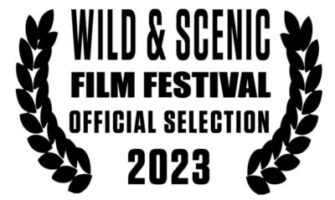
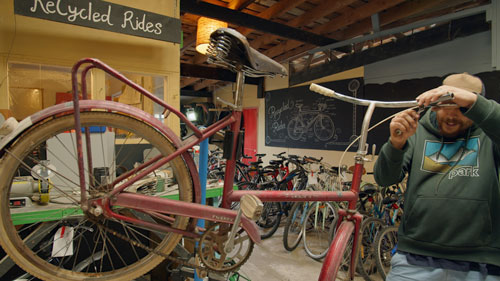
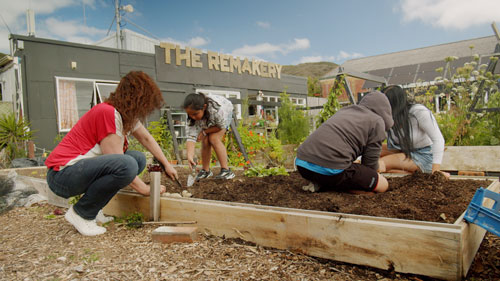
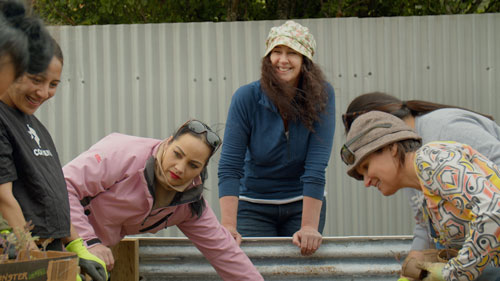
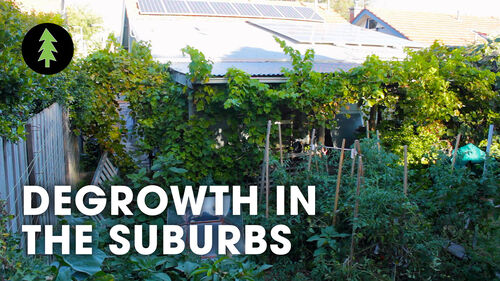
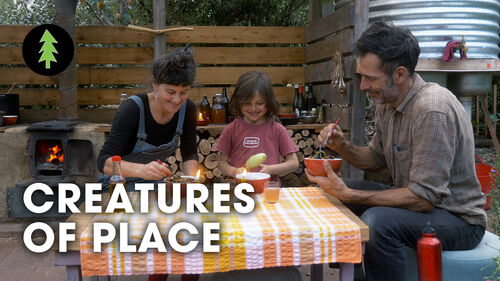
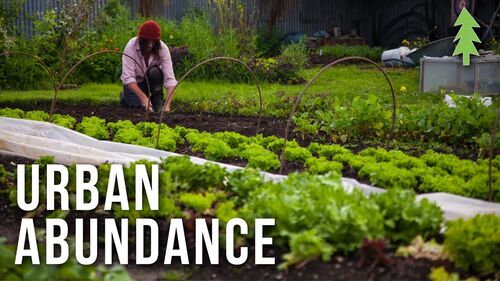
Share your thoughts about community building and the Together We Grow film